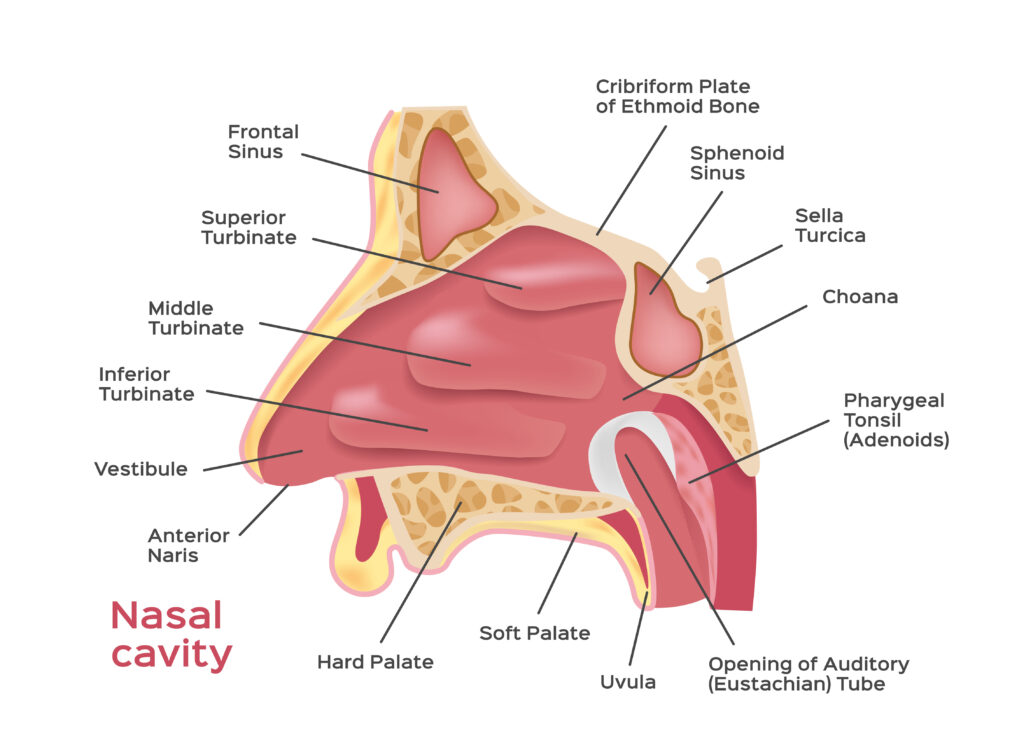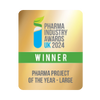Nasal Delivery Overview
The anatomy and physiology of the nasal cavity creates a number of unique opportunities for the successful delivery of drugs and vaccines. This can be locally, systemically or directly to the central nervous system. This utility has resulted in growing interest from scientists looking to administer both therapeutic agents and vaccines via the nasal delivery route. This interest has been fuelled by a number of factors, not least the surge in interest in delivering Covid-19 prophylactic treatments and vaccines to the nasal cavity, the site of first infection.
Devices delivering drugs or vaccines into the nasal can generally be divided into those delivering either a liquid or dry powder formulation. At Upperton, we have seen a surge in interest in delivery by both of these formulation approaches.
Over the next few weeks, we will be producing a series of short articles in which we will be discussing a number of advantages that this fast-growing delivery route offers, as well as considering some of the challenges that are associated with the development of nasal formulations for use in the clinic.
In this, our first article, we will consider the basic anatomy of the nasal cavity in order to explain why it is such a good target for delivery. The article will then go on to explore some of the advantages that nasal delivery offers over more traditional routes of administration.

Exploiting Nasal Physiology for Drug Delivery
In order for the nose to both smell and breathe, the human nasal cavity has developed a number of unique physiological features. These features can in turn be exploited for drug delivery purposes.
The nostrils mark the entrance into the nasal cavities, which in turn narrow into a point called the nasal ostium. The septum separates the two cavities, which extend, on average, 12–14 cm from the nostrils to the junction between the nose and pharynx. This junction is called the nasopharynx. The nasal-associated lymphoid tissue (NALT), an area that may be associated with inducing mucosal immunity, is located in the nasopharynx.
Within the nose itself, the main nasal passage is further divided by three projections from the septum called turbinates. These turbinates are designed to maximise contact between the air and mucosal surface. The inferior, middle, and superior turbinates are highly vascularised with relatively thin membranes. The result is an increase in the total surface area of the nasal cavity to 150 cm², making them an ideal target for systemic drug delivery. Other physiological targets for delivery are the olfactory and trigeminal nerves which innervate the nasal cavity. These neurones offer a potential target for nose to brain delivery and represent around 10% of the total nasal surface area.
What advantages does nasal delivery offer?
Nasal delivery offers a number of advantages for certain classes of drug compounds and vaccines. These advantages include the following:
Fast onset of action (rapid absorption)
Potential for local, systemic and CNS delivery
High levels of patient acceptance
Improved bioavailability (avoids first pass metabolism encountered with oral delivery)
Needle free (enabling self-administration)
Delivery that is independent of inspiration (advantageous in some acute setting)
Dry powder or liquid options available (stability advantages)
Needle free administration of vaccines to elicit immune response in the area of initial infection (nasal cavity)
One of the most obvious advantages of nasal delivery is the rapid absorption across the nasal membranes into the systemic circulation, resulting in fast onset of action. These systemically acting nasal products can be rapidly administered. Examples include pain medications for migraines such as Imitrex® (sumtriptan nasal spray), Migranal® and Zomig®. Generally speaking, drug uptake across the nasal membrane is dictated by hydrophobicity of the drug (improving transport) and residence time on the membrane.
In addition to rapid delivery, nasal administration is generally considered more user friendly, with greater compliance among patients and an easy, needle free administration for carers and HCPs This route of administration also alleviates the need for the patient to be conscious, with an un-coupling of inspiration to successful delivery (as is the case with pulmonary delivery). These factors have been exploited for the delivery of dry powder glucagon to treat very low blood sugar (hypogycemia). This dry powder single dose rescue treatment received FDA approval in 2019 of Eli Lilly’s BAQSIMI® as a dry powder spray in a portable, single-use, ready-to-use device.
Another major advantage of nasal delivery is that it is an alternative delivery route which removes the need to withstand the harsh environment in the GI tract that arises during oral delivery. As a result, it is possible to avoid first pass metabolism in the liver, without the need for injection and with subsequent increase in bioavailability.
A more specialised aspect of nasal delivery that is of growing interest is the potential to deliver directly into the brain. Both the olfactory and trigeminal nerves innervate the nasal cavity, making them a potential target for nose to brain delivery. This is quite a challenging prospect but next generation devices currently being developed may have particular utility in brain disorders such as Parkinson’s disease.
Finally, the factor that is driving growth in nasal delivery at present is the Covid-19 pandemic. The primary route of viral infection is via the upper respiratory tract i.e. the nose, before increased viral load results in further infection in the lungs. Delivering a range of prophylactics (such as antivirals) and vaccines through the nasal cavity is now considered the best route of delivery for prevention and treatment of this disease.
Nasal vaccination is not new, MedImmue’s FluMist®, approved in 2003, delivers an annual influenza vaccine intranasally and other groups such as Mymetics (Switzerland) have reported promising results with nasally administered HIV vaccines.
In conclusion, the benefits of nasal delivery have, and continue to be, utilised for a variety of purposes and the growing interest in this area is sure to lead to both new and improved possibilities for nasal administration.
Discover Upperton's Nasal Dosage Form Capabilities
The ability to self-administer small molecules, biologics and vaccines is highly attractive. Discover Upperton's knowledge and expertise in rapidly developing products for this alternative delivery route.
Frequently Asked Questions
What are the advantages of nasal delivery over traditional methods?
Nasal delivery is non-invasive, avoiding needles. It offers rapid absorption due to the nasal cavity’s rich blood supply, leading to quick therapeutic effects. Additionally, it can bypass the digestive system, reducing drug degradation.
Are there vaccines administered through the nasal route?
Yes, nasal vaccines, such as the FluMist influenza vaccine, are administered via the nasal route. This method can stimulate mucosal immunity, potentially offering enhanced protection against respiratory pathogens.
What types of formulations are used for nasal delivery?
Both liquid (solutions or sprays) and dry powder formulations are used. The choice depends on the drug’s properties and the desired therapeutic effect.
Get in touch.
If you’re looking to work with a CDMO that can support your product from preclinical development to market and beyond, then we’re here to help.





